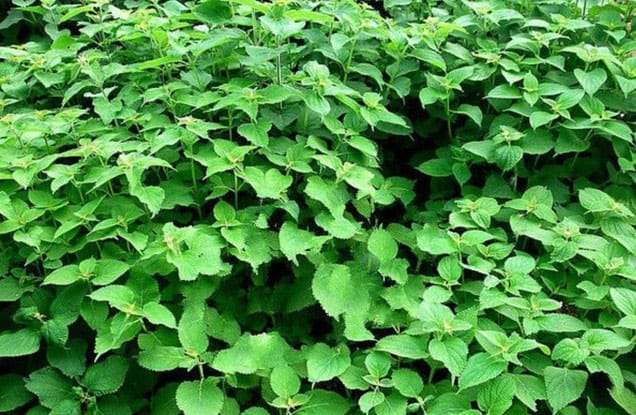Rabdosia, Dong Ling Cao 冬淩草
Japanese RabdosiaDong Ling Cao, Si Leng Gan (TCM)
Yog Mo ཡོག་མོ་ (Tibetan Medicine)
 Isodon rubescens
Isodon rubescens(Photo by Lixiaozhuo123) (Wikimedia)
Botanical name:
Rabdosia spp. (syn Isodon spp.)
1. R. rubescens
2. R. japonica
3. R. rubescens var. glaucocalyx
In China there are a large number of Isodon and Rabdosia species that are used similarly.
Parts used:
Herb
Temperature & Taste:
Cool, dry. Bitter, Sweet
Classification:
B. Clears Heat and Toxin
Uses:
1. Clears Heat, Resists Toxin:
-Sore Throat, Tonsillitis
-Cold, Influenza
-Hepatitis, Gastritis
-Snake and Insect Bites
2. Moves the Blood, Eases Pain:
-Muscle and Joint pain
-Amenorrhea, Dysmenorrhea
-Trauma, Bruising (TCM)
-Wounds (Tibet)
3. Resists Toxin, Resolves Masses:
-Mastitis
-Tumors and Cancer (TCM, Tibet)
-recently used for Cancer of Esophagus, Liver, Prostate, Ovarian, Melanoma, Leukemia etc.
Dose:
Decoction: 30–60 grams
Main Combinations:
1. Common Cold, Flu, Rabdosia with Forsythia Lian Qiao, Isatis Da Qing Ye
2. Amenorrhea, Rabdosia, Dang Gui, Motherwort
3. Cancer:
i. Rabdosia, Solanum nigrum
ii. Rabdosia, Scutellaria Bai Zhi Lian, Hedyotis Bai Hua She She Cao
iii. Prostate Cancer, Rabdosia, Scutellaria Huang Qin, Isatis Da Qing Ye, Notoginseng San Qi, Chrysanthemum Ju Hua, Ganoderma Ling Zhi, Licorice, Saw Palmetto (Chen & Chen)
Major Formulas:
Cautions:
1. Some people may experience nausea, vomiting, diarrhea and abdominal discomfort with use.
Main Preparations used:
-
Extra Info
- Research
